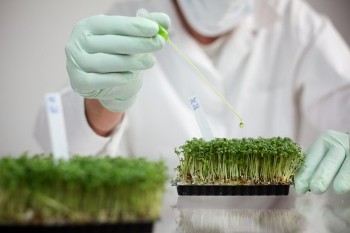Feb 10 2014
All in all, from planting seeds to feeding people, industry is striving to achieve a better and healthier food supply to meet the demands of a growing world with help of new technologies and materials.

It’s not a secret to anyone that in order to make sure that our daily groceries stay appetising and arrive at our table safely, industry creates innovative packaging solutions, enhanced with new materials that reduce cost and minimise the environmental impact. Leading food and beverage manufacturers utilise innovations in diagnostics to help guarantee that food is not contaminated, and even at the very beginning of the process, at the farms, biotechnology solutions help protect crops and thus increase the food production. Did you know that food biotechnology, for instance, saved Hawaii’s papaya crops from devastation by developing virus-resistant crops? Also that was told by International Food Information Council Foundation.
Hence, all in all, from planting seeds to feeding people, industry is striving to achieve a better and healthier food supply to meet the demands of a growing world with help of new technologies and materials.
Current expectation is that new technologies and materials will impact the entire food industry, revolutionising the way food is produced, processed, packaged, transported, and consumed. And this impact has become more apparent over the last few years, as several food and beverage companies are announcing plans to improve existing products and develop new ones to maintain market dominance. Space-age concepts like smart packaging, on demand preservatives, and interactive foods (which for instance allow consumers to modify food depending on their own nutritional needs or tastes) are now becoming an every-day reality.